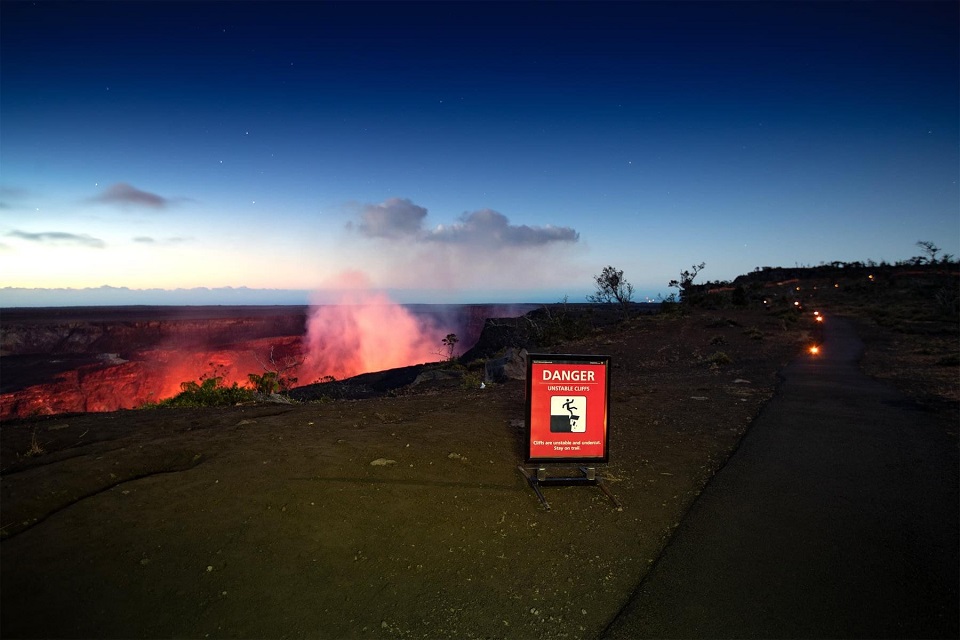News Release
You are viewing ARCHIVED content published online before January 20, 2025.
Please note that this content is NOT UPDATED, and links may not work. For current information,
visit https://www.nps.gov/aboutus/news/index.htm.

NPS Photo/Janice Wei
|
Subscribe
|
Contact: Jessica Ferracane, 808-985-6018
Hawaii National Park, HAWAI‘I – Rangers at Hawaiʻi Volcanoes National Park have three tips for visitors intent on seeing the new Kīlauea summit eruption: stay on trail, avoid peak times, and spread out.Stay on Trail. Crater edges are unstable and can collapse without warning, causing serious injury or death. Off trail areas are unstable from the 2018 summit collapse, and cracks and other unseen hazards could lurk below thin layers of soil or ash. This is especially concerning between trails and the crater rim.
Avoid Peak Times. Everyone wants to see Kīlauea glow in the dark. Kīlauea Overlook and Wahinekapu do offer breathtaking panoramic views in good weather, but their parking lots fill quickly between 5 p.m. and 8 p.m., and overflow parking at Kilauea Military Camp is a mile or more away. The park is open 24 hours a day, so come after 8 p.m. or an hour or two before sunrise. Bring a flashlight and don’t forget warm clothes, rain gear and sturdy footwear.
Spread Out. Can’t avoid the rush? Skip the trip to Kīlauea Overlook and Wahinekapu, and save them for another time. Park at Kīlauea Visitor Center and find a vantage point nearby. Head for Volcano House for the view, then walk east on Crater Rim Trail towards Waldron Ledge. There are some not-so-secret but far less crowded vantage points along the way and at Waldron Ledge. It’s not safe to share air or stand shoulder to shoulder due to the COVID-19 pandemic. Keep six feet apart and wear a mask.
The new eruption began December 20, and has become an approximatley 82-acre, 600-foot-deep lava lake being fed by two vents. The lava lake is contained within a closed area at Halemaʻumaʻu, Kīlauea volcano’s summit crater, and is not visible to the public. Dangerous levels of volcanic gas, rockfalls, explosions and volcanic glass particulates are the primary hazards.
About the National Park Service. More than 20,000 National Park Service employees care for America’s 423 national parks and work with communities across the nation to help preserve local history and create close-to-home recreational opportunities. Learn more at www.nps.gov, and on Facebook, Instagram, Twitter, and YouTube.
Last updated: December 31, 2020
